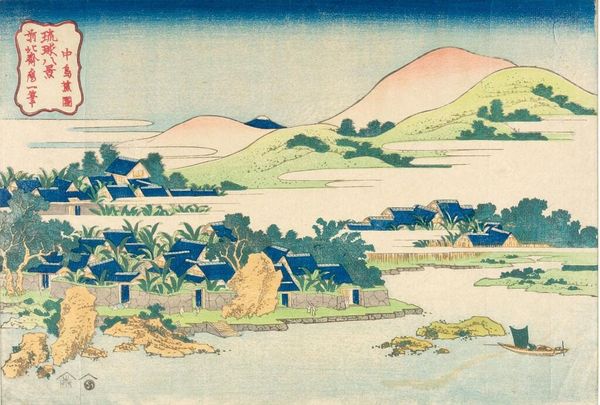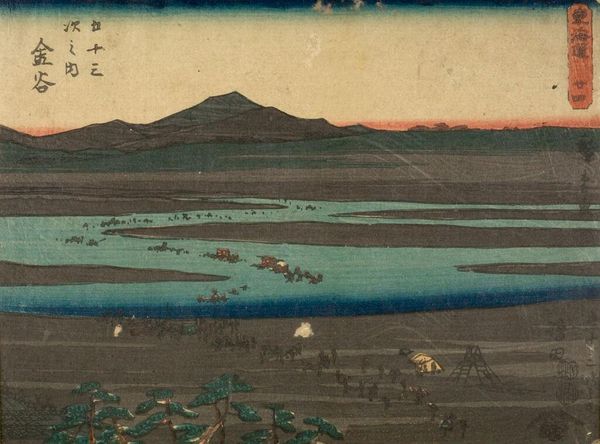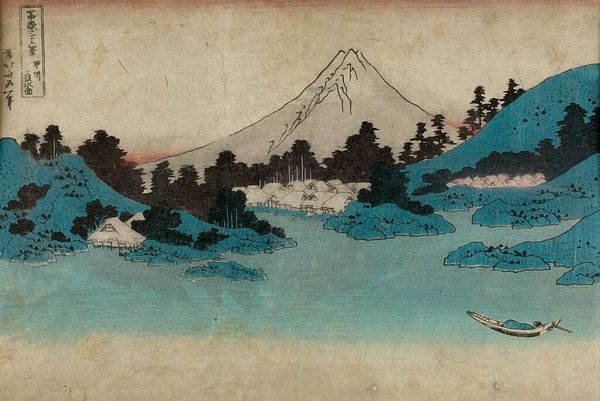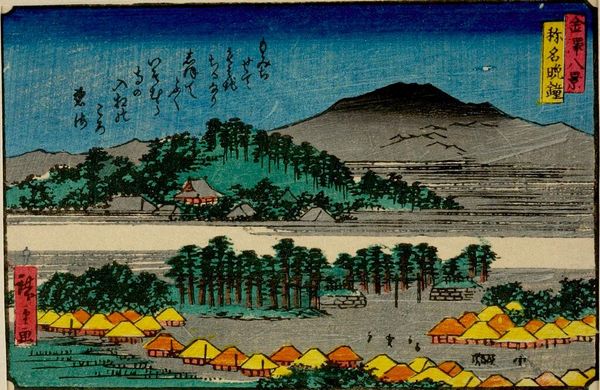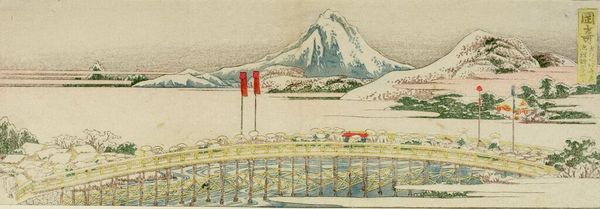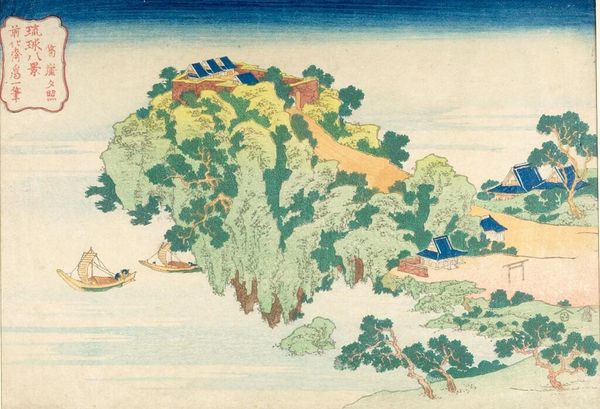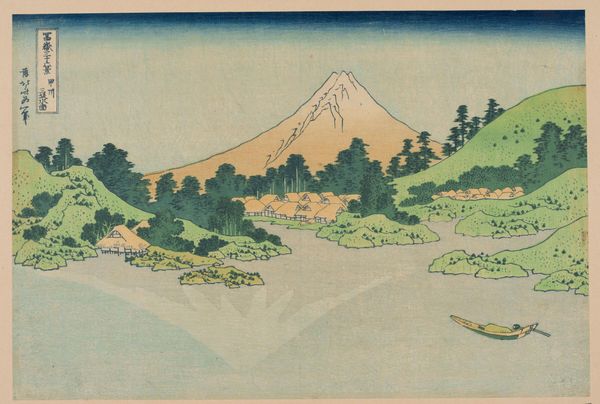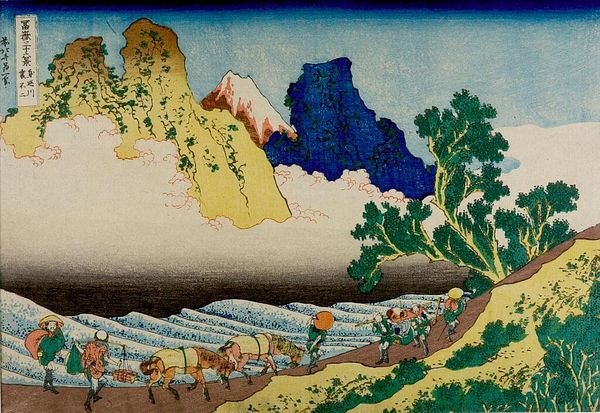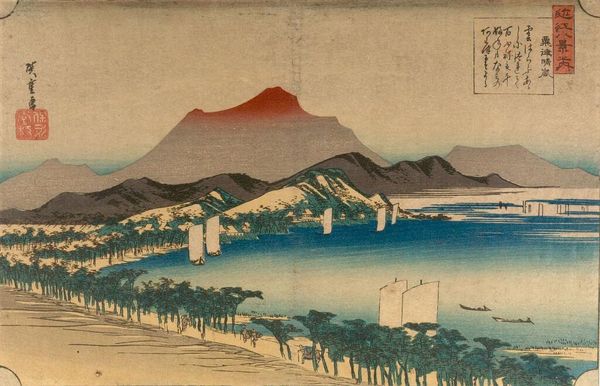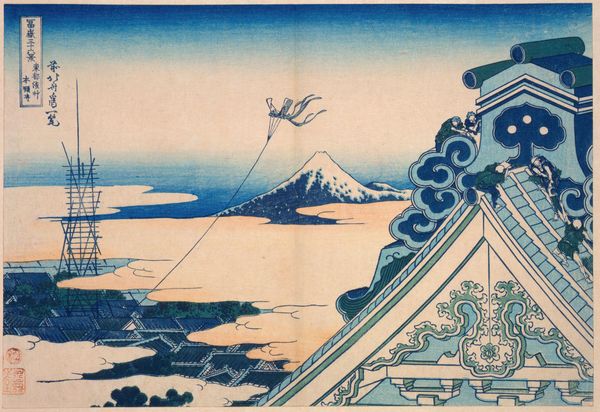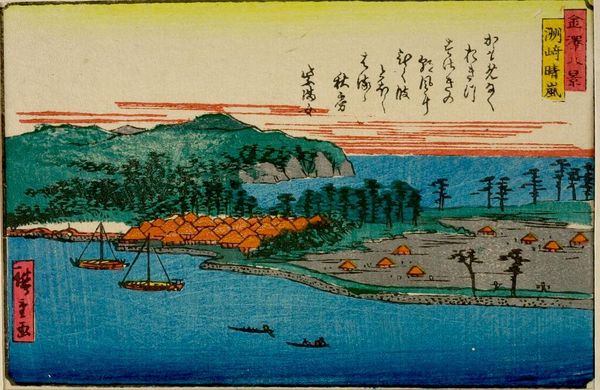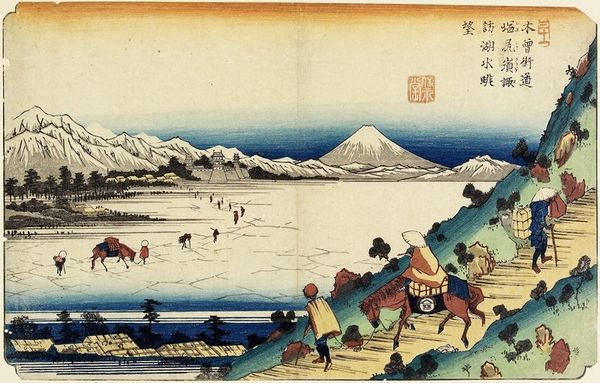
Fuji from Kanaya on the TÅkaidÅ (TÅkaidÅ Kanaya no Fuji), from the series Thirty-Six Views of Mount Fuji (Fugaku sanjÅ«rokkei) c. 1831
0:00
0:00
Dimensions: paper: 26.2 x 38.2 cm (10 5/16 x 15 1/16 in.) printing block, approx.: 25.7 x 37.9 cm (10 1/8 x 14 15/16 in.)
Copyright: CC0 1.0
Curator: Hokusai's print, "Fuji from Kanaya on the Tokaido," part of his "Thirty-Six Views of Mount Fuji" series, captures a bustling scene of travelers. It's interesting how he renders the human figures almost as part of the landscape itself. Editor: The rhythmic repetition of those laborers crossing the Oi River is compelling, yet it also raises questions. How does this romanticized view of travel on the Tokaido Road obscure the exploitation inherent in this system of labor? Curator: Indeed. The composition emphasizes the arduousness of the journey, each figure capped, bent under the weight of their task, yet Fuji watches serenely from afar. Perhaps it symbolizes perseverance. Editor: Or perhaps the ever-present symbol of Fuji serves as a reminder of the unchanging power structures that normalize this toiling class, rendering them anonymous. The beauty distracts from the socio-economic realities. Curator: It is a balancing act. Hokusai uses the symbol of Fuji to invoke deeper contemplations about Japan, it's social structure and the nature of progress. Editor: Ultimately, this woodblock print, like so many images, is both beautiful and complex. It reminds us to look beyond the surface, seeking out those marginalized histories contained within.
Comments
No comments
Be the first to comment and join the conversation on the ultimate creative platform.
